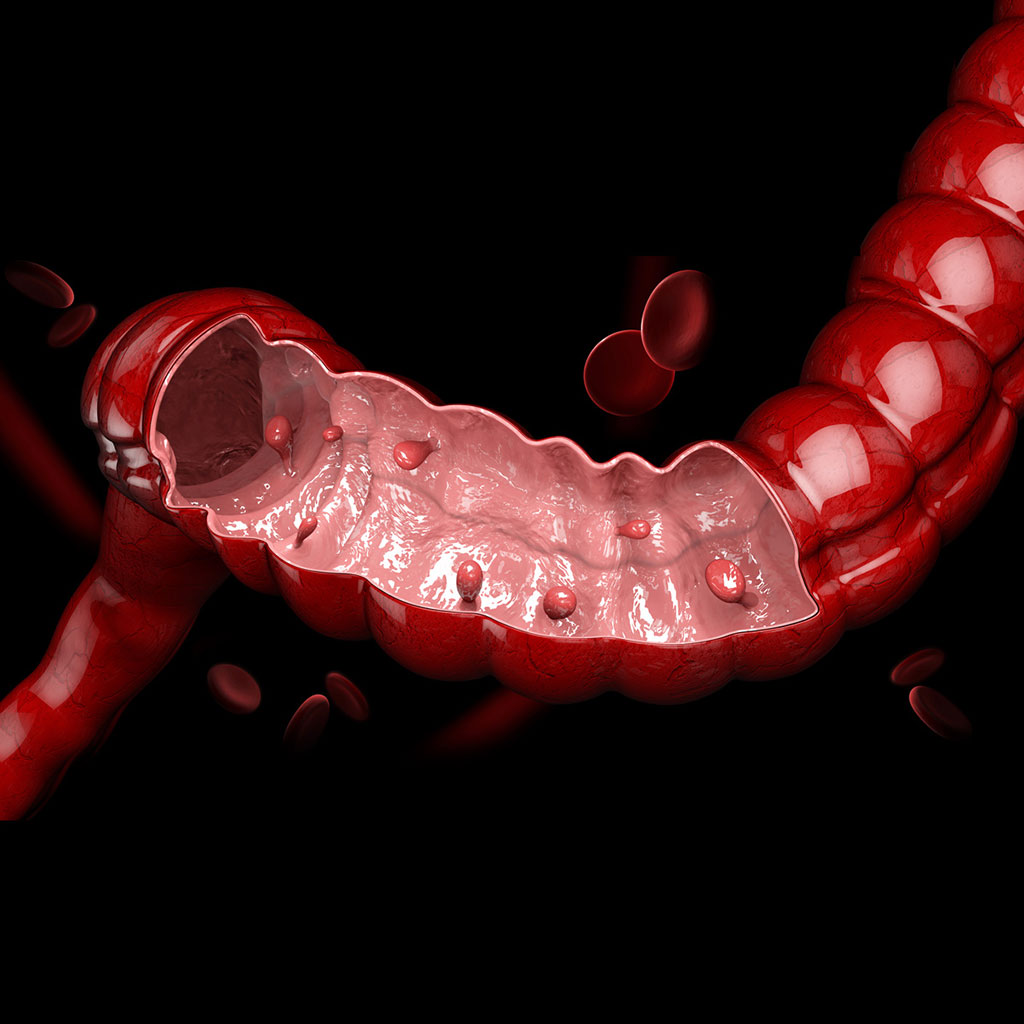
Overview
Colon polyp (also known as colorectal polyps) is the tissue growth at the lining of the colon. Some colon polyp may turn into a colon cancer if left untreated at an earlier stage.
Most people with colon polyp are asymptomatic, therefore it is recommended to have regular screening test such as colonoscopy at an early age to prevent the colon cancer. People who are at 45 years old and above are at risk to develop colon polyps, however not all colon polyps develop into colon cancer.
Two main categories of polyps:
- Nonneoplastic: There is a possibility that non-neoplastic polyps will not progress into a cancer. This types of colon polyp includes hyperplastic polyps, inflammatory polyps, and hamartomatous polyps.
- Neoplastic: This type of polyps have the potential to evolve into a cancerous polyp if left untreated. This includes adenomas and serrated type of polyps.
Symptoms
Most people with colonic polyp are asymptomatic. In some symptomatic case, the signs and symptoms of are as follows:
- Blood in stool: black stool (dark-colored) or have red streaks it could be a sign and symptom of colon polyp, however a change in color of the stool could also be caused by other factors such as dark colored food, or medications.
- Bleeding at the rectum: if your rectum is bleeding, this could be a sign of colon polyp or colon cancer.
- Change in bowel movement: either constipation or diarrhea that last longer than a week.
- Iron deficiency anemia: lack of iron in the body could lead to tiredness and fatigue because some polyp may bleed, some patients may lose small amount of bleed. The bleeding in small amount may not be visible in stool but if left untreated for a long time, this could feed to iron deficiency anemia
- Abdominal pain: as it is rare but abdominal pain or cramps could be a sign and symptom of colon polyp.
If you notice any signs and symptoms that are persistent then you could make an appointment with your doctor. Investigation may be recommended due to that colon polyp signs and symptoms are not specific with the disease and even if you have no symptom, some people still benefit from screening program to prevent Colorectal cancer.
Causes
Polyps could occur in any part of the large intestine. Its genetic changes in the cells at the colon affects the normal cycle of the cells. The excessive growth of the cells developed into a polyp.
Risk factors
Factors that may increase colon polyp risk includes:
- Age: all age could develop colon polyps but people who are 45 years old and above have higher risk.
- Family History: people with a first-degree relative (parent, sibling, or child) with colonic polyp or other types of cancer increase the risk of developing this disease.
- Smoking and alcohol intake: people who smokes and have excessive alcohol intake are higher risk to develop colon polyps compared to nonsmokers and non-drinkers.
- Obesity: people who are overweight or obese have higher risk to develop colon polyps.
- Food intake: people who eat too much processed food and red meat are at risk to develop the disease.
- Race: African American ethnicity are at risk to have colon polyps compare to other race.
- Inflammatory bowel disease: people who have Crohn’s disease or ulcerative colitis of the colon increases the risk for colon polyps or colon cancer.
Diagnosis
Screening for colon polyp
Some screening tests aims to find polyps or noncancerous colon polyps, which are advised to healthy people who have no symptoms. The advantage of detecting colon cancer at the early stage will give patient a significant chance of being cured. There has been some evidence that screening tests can reduce the risk of death from colon cancer.
Diagnosing colon polyp
In order to diagnose colon polyps, the following procedures may be recommended:
- Colonoscopy: an investigation which consists of inserting a flexible thin tube connected to a tiny camera, which will be inserted into a patient’s bowel to evaluate the colon and rectum to examine for any signs of cancer. If any unusual signs are detected, a surgical tool will be inserted through the scope to take out a sample of the colon’s tissue or polyp for examination under a microscope to look for cancer cells.
- Computed tomography colonography (CT colonography): is a minimal invasive imaging scan used to screen the colonic polyp or colon cancer. If the CT scan shows suggestive of polyp, the doctor will have to remove the polyp using colonoscopy for examination under a microscope to look for cancer but this modality is limited if people size is less than 5 mm
- Sigmoidoscopy: a thin and flexible tube is inserted to rectum to sigmoid colon for examination same as colonoscopy but some part of Colon won’t be evaluated
- Stool-test: a stool sample is taken and will be examine for blood for any signs of colon polyp or colon cancer. If there are presence of any signs of the diseases then colonoscopy is recommended for confirmation of the disease. Stool test is noninvasive, easy to performed and cheap but this test is not accurate and patient has to repeat this test more frequently than other modality
Treatment
The common treatment for colon polyp is the surgical removal of the polyp. Sample will be taken for tissue biopsy to determine whether the polyp is cancerous.
- Polypectomy: is a surgical procedure during a colonoscopy which removes the polyp using a forceps or a wire loop.
- Minimally invasive surgery: is done to remove the polyp that cannot be operated during colonoscopy. This operation is done by making a few small incisions in the abdominal wall, while medical equipment that has cameras attached, will be inserted to remove the segment of Colon that contain polyp.
- Total proctocolectomy: is a surgical removal of the colon and the rectum. This procedure is recommended if the patient have Familial Adenomatous Polyposis (a rare genetic condition). Colostomy and ileostomy may serve as the new exit point of stool.





